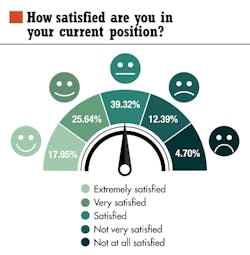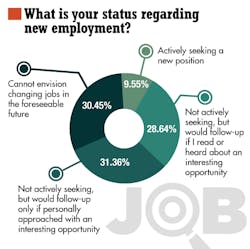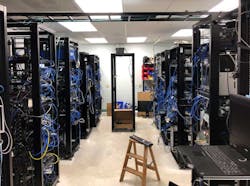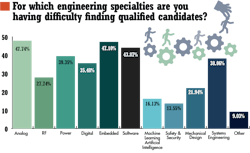Engineering is Still a Great Job
This article is in the Annual Salary Survey series.
This article appeared in Electronic Design and has been published here with permission.
I was excited about engineering before I was in high school. I discovered programming then and you can tell I’ve been around for a while—my first exposure to software was programming in BASIC on a Teletype ASR 33 with punch paper tape. Georgia Institute of Technology was the starting point of being a real engineer with co-op sessions at Burroughs Corp. working with mini and mainframe design.
I’ve had a lot of jobs since then and backed into the editorial side of things because I had a knack for technical writing. I still dabble with hardware and software, but I’ve never lost the awe and excitement of engineering.
One thing that’s always cropped up along the way was whether engineering was a worthwhile profession. I’ve always recommended it to those who were interested; I have three children who are all engineers, although none went into electric engineering or software like dear old dad or into mom’s engineering field either.
I’m happy to say that most engineers and programmers want to stay in their jobs and would recommend them to others based on the results of our recent salary survey. The majority of engineers and programmers were satisfied with their current position, which is a good indication they chose the right profession (Fig. 1). Likewise, the survey results show that more than 90% recommend engineering as a career choice to others. Still, getting into a good engineering school will be a challenge with an acceptance rate on the order of 8%.
Job satisfaction seems to match well with retention or it may be the sign of the times. Not a lot of engineers or developers are actively searching for a new position (Fig. 2). Still, a substantial portion are keeping their eyes open for opportunities that may arise.
The challenge for companies that want to retain their staff include keeping them happy. Likewise, trying to attract new employees has become more interesting since location sometimes isn’t a factor, given the ability to work remotely. Even developers who need to work with hardware may not be limited by remote access.
For example, Green Hills Software’s Embedded Board Farm allows developers to test software on actual hardware without having it on a nearby lab bench (Fig. 3). The boards are connected to power supplies, scopes, and logic analyzers that can be remotely controlled. Remote collaboration also is part of the mix these days, with access to shared debugging tools and video conferencing allowing people to work together from almost anywhere.
The outlook for engineers who want to stay put or move into new positions looks good, with most companies maintaining or increasing the number of engineers or developers on their staff (Fig. 4). The fact that over 40% are looking for new employees should make those hunting for a new position happy.
On the flip side, matching up the engineers and developers to fill needed positions can be a challenge of human resources as well as engineering managers. Our results based on feedback from both our electrical/electronic and machine design respondents (Fig. 5) was pretty similar. Systems engineers are in demand everywhere, with mechanical engineers high on the list as well. Electrical/electronic engineering responses put a higher priority on areas like analog and RF.
The only surprise I noted was that machine learning/artificial intelligence (ML/AI) was on the low side. I suspect that’s being driven by two factors. First, ML/AI is being used in specialized areas such as automotive applications and that industrial applications are just starting to ramp up investigation or deployment. It also may mean that the solutions accessible to developers are being packaged in a way that allows their use without requiring lots of expertise. Of course, telling an engineer that they can’t handle a job is like waving a red flag in front of a bull.
Besides, learning on the job is par for the course for engineers and programmers. But I leave that part of the story to other editors who are writing about our survey results.
It does lead me to the chart highlighting concerns that keep engineers up at night (Fig. 6). I had to contend with quite a few of those at the top end when managing a group of engineers and programmers, including deadlines and staying current with new and emerging technologies. ML/AI would fall in that category for many.
Product quality and availability rank high on the list. The survey was done before much of the major supply-chain issues arose, so these percentages may be increasing. We shall see how things fare in 2022. They weren’t really an issue in 2020.
COVID-19 is in the list and one that will likely be with us for at least the near future. It has changed the landscape significantly for trade shows and working conditions, with remote attendance being the norm at this point whenever possible. Vaccinations are making it easier to work and meet in person, but the interest in continuing remote operations is high. As noted, it also can be a selling point for a job these days, with companies being more amendable to it versus just a couple years ago.
I help manage the local, annual Mercer Science and Engineering Fair and I like to let the students know that their interests can lead to fulfilling jobs in industry. Our survey results reinforce this view. I hope everyone’s interest in science and engineering will be passed onto new and budding programmers, engineers, and developers so that they can enjoy the benefits and meet the challenges you encounter on a regular basis.
Read more articles in the Annual Salary Survey series.
About the Author
William G. Wong
Senior Content Director
I am Editor of Electronic Design focusing on embedded, software, and systems. As Senior Content Director, I also manage Microwaves & RF and I work with a great team of editors to provide engineers, programmers, developers and technical managers with interesting and useful articles and videos on a regular basis. Check out our free newsletters to see the latest content.>
You can send press releases for new products for possible coverage on the website. I am also interested in receiving contributed articles for publishing on our website. Use our template and send to me along with a signed release form.
Check out my blog, AltEmbedded on Electronic Design, as well as his latest articles on this site that are listed below.
You can my social media via these links:
- AltEmbedded on Electronic Design
- Bill Wong on Facebook
- @AltEmbedded on Twitter
- Bill Wong on LinkedIn
I earned a Bachelor of Electrical Engineering at the Georgia Institute of Technology and a Masters in Computer Science from Rutgers University. I still do a bit of programming using everything from C and C++ to Rust and Ada/SPARK. I do a bit of PHP programming for Drupal websites. I have posted a few Drupal modules.
I still get a hand on software and electronic hardware. Some of this can be found on our Kit Close-Up video series. You can also see me on many of our TechXchange Talk videos. I am interested in a range of projects from robotics to artificial intelligence.







